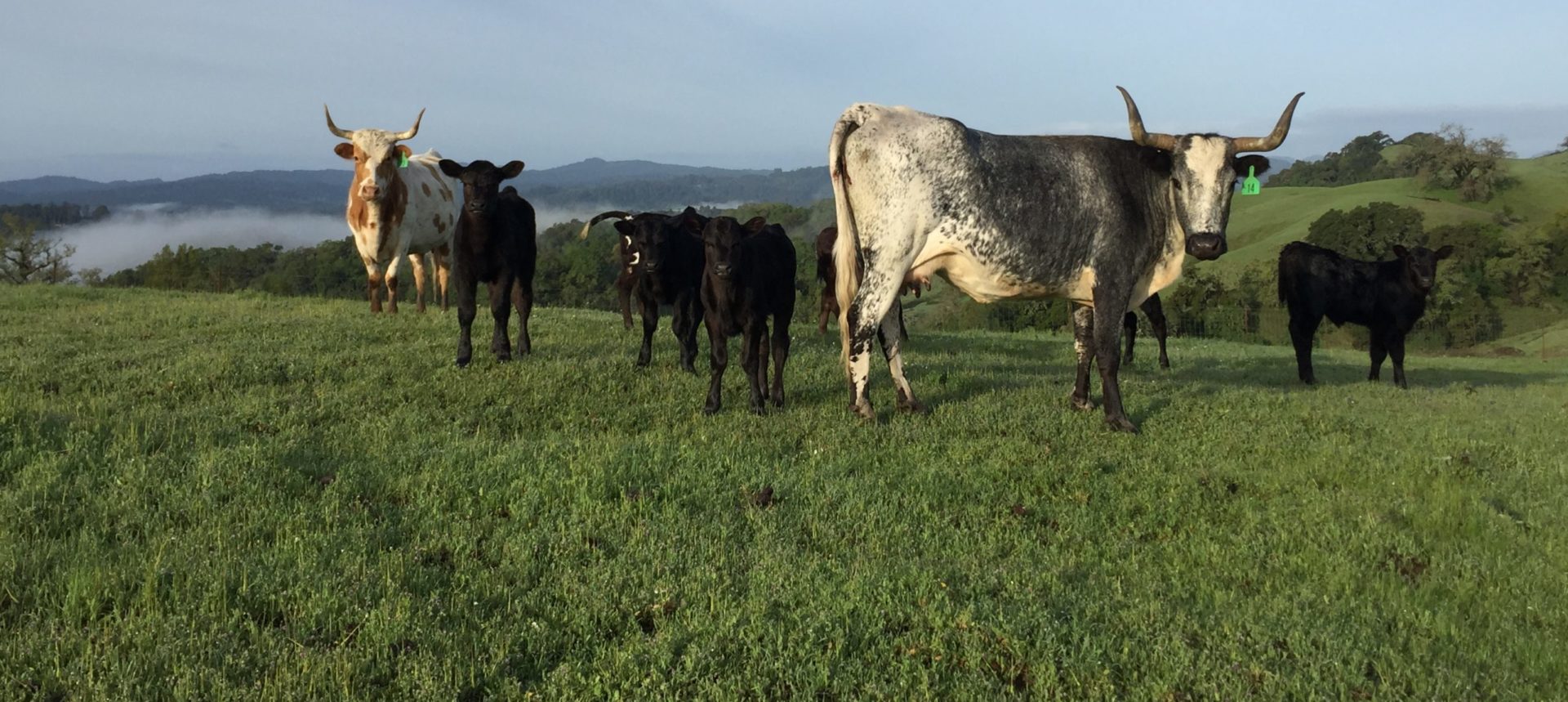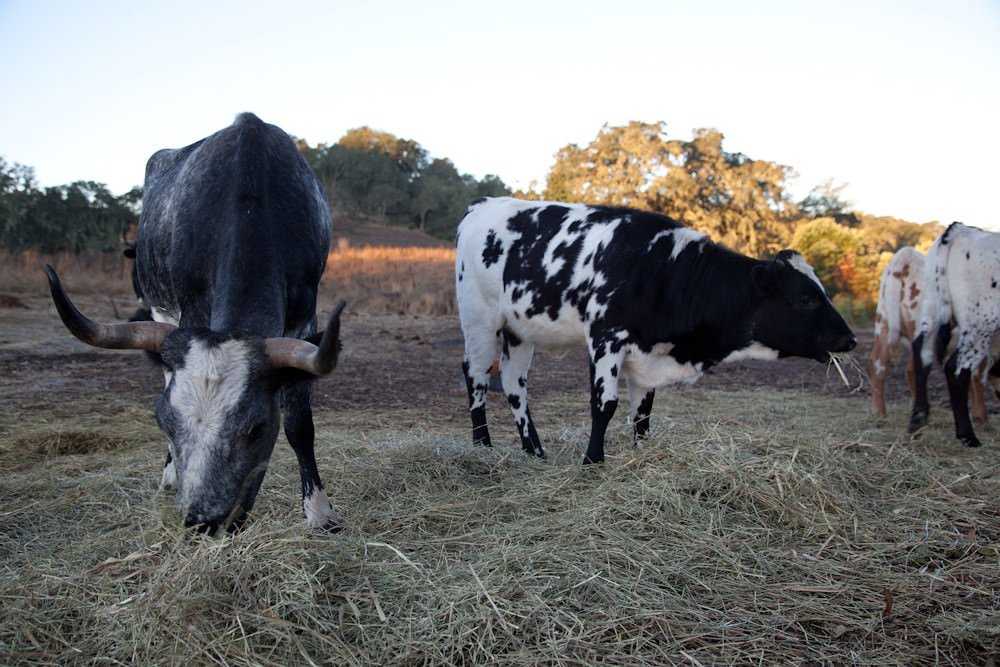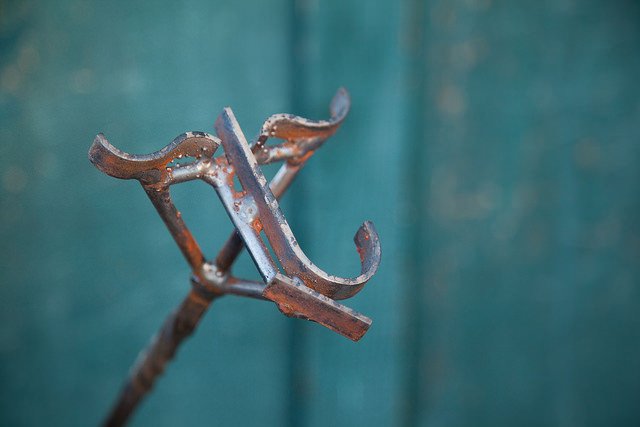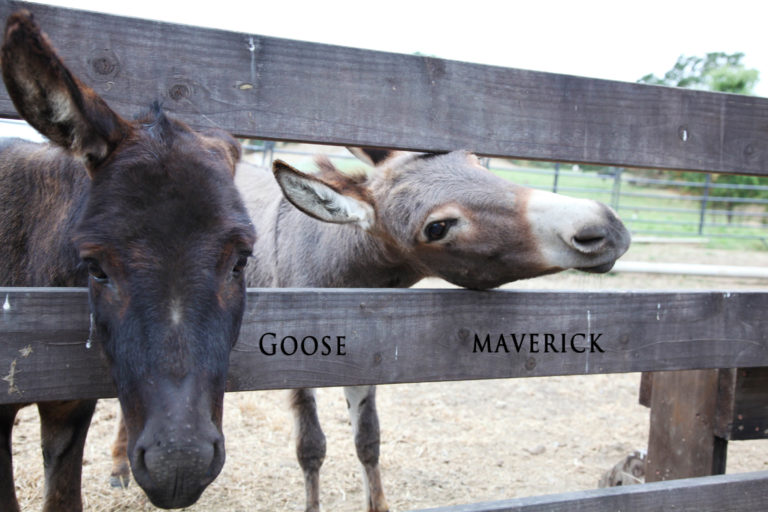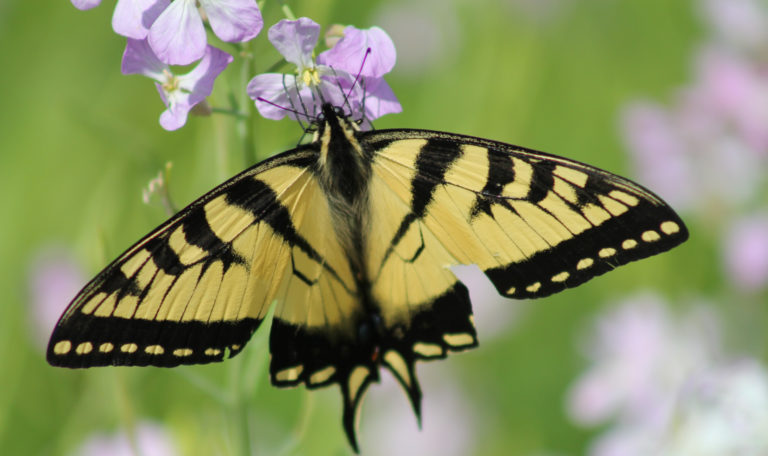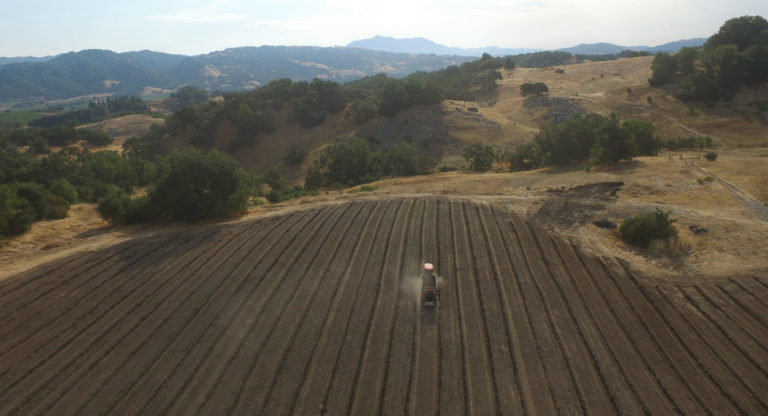Among the things you expect to see on a winery tour are vineyards, tanks, barrels, and of course, bottles of wine. But cows? Maybe not until recently at Jordan.
In 2011, we added a small herd of cattle—cows and their calves—to the estate. They happily live and graze in fenced pastures around the 1,250-acre property—across from our garden and in the rolling hills below Jordan Vista Point. The herd has grown from the original six to its current state of 24 cows and their annual offspring.
Cattle roaming the open pastures at Jordan Estate signifies a return to our past, a tribute to the agricultural history of our land. Before Tom and Sally Jordan purchased the estate in 1974, two well-known farming families in the region, Foppiano and Passalacqua, ran cattle on rolling, grassy pastures that covered three-quarters of the estate. Cows remained at Jordan into the 1980s.
Director of Agricultural Operations Brent Young expressed interest in bringing cattle back to Jordan. When John Jordan received a designer cowboy hat as a gift from a Texan friend, he considered it a sign and requested a herd with horns. He couldn’t bear the thought of being all hat and no cattle.
To start our herd, Young turned to a good friend in Oregon —a breeder with 1,500-2,000 head of cattle. He chose an intriguing crossbreed of Texas Longhorn and Mexican Corriente cows. The Corriente breed originated in Spain and was brought to the Americas in the 1400s.
Similar in appearance to a Texas longhorn, Corriente cattle are lean, and the females especially tend to stay small—a trait that comes in handy for a breed some call escape artists due to their penchant for breaking free from their pastures. Estate Tour & Tasting guests are pleasantly surprised to see our cows with their impressive horns and spotty hides.
On a more practical note, Corriente require little attention. They eat and drink little. Still, they are hardy and bred for a wide range of purposes, including use in rodeo competitions. Young decided to start our herd of Longhorn bred with Corriente with three heifers and three calves. Those numbers have increased each spring. Heifers were bred to a Black Angus bull, giving birth to a triple crossbreed of calves. A few years later, 10 Black Angus cows were also introduced to the herd.
Young designed and received Jordan’s livestock brand from the State of California in 2011, which included designing and sourcing a unique brand, learning how to apply a brand and passing inspection.
While we aren’t too worried about needing the branding to ward off rustlers, our cows do get a lot of attention. They also enjoy a delectable diet of native grasses, as well as corn husks and seasonal byproducts from our garden year-round. As the herd expands, Young has outlined additional areas of the estate to construct fencing that will allow for expanded grazing. The grazing assists in controlling fuel loads during the fire season by minimizing low-lying brush and branches—another key component of our sustainable farming estate.
Needless to say, the cows have earned their permanent residence at Jordan.
